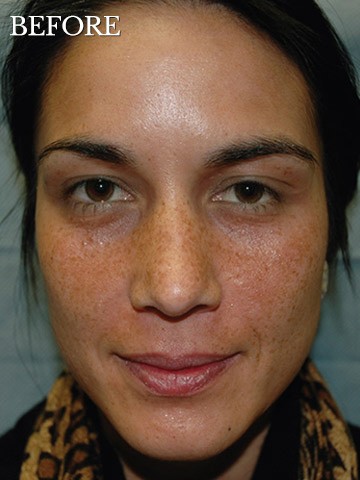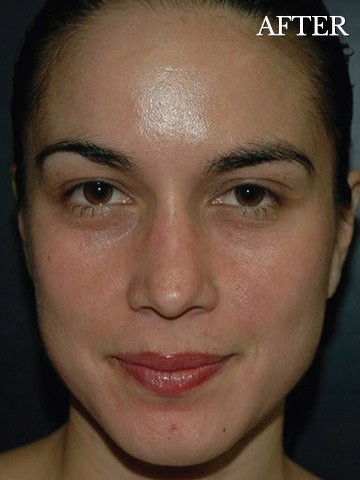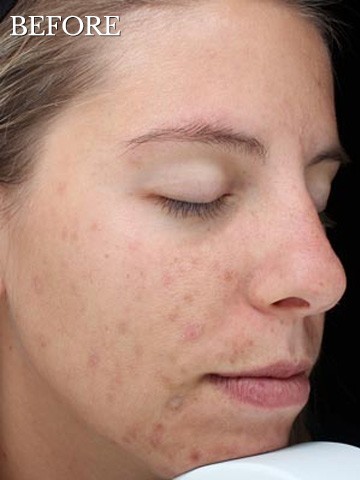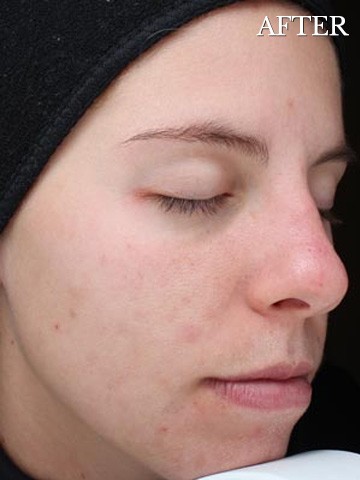Medical Grade Peels
Chemical peels are a fantastic option for people who want to remove dead skin cells and address fine lines and hyperpigmentation. The medical-grade chemical process allows you the safety of knowing it won't harm your sensitive areas while still providing excellent results!
Cosmelan peels are an excellent way to treat skin concerns and spots due to problems with melanin production. They’re suitable for people regardless of their sensitive or mature skin, fair-medium complexions in any color (or ethnicity), and even those suffering from blackheads!
PCA SKIN® is the leader in chemical peels with expertly formulated chemical peels designed to help you achieve your skincare goals. With more than 25 years of formulating the best and most innovative professional treatments in the industry.
You can look younger and feel confident with SkinMedica’s full range of superficial peels. Administered by a BHRC skin care professional, these treatments will help your complexion appear more uniform—diminishing the appearance of fine lines, wrinkles, and roughness!
A VI Peels are a medium-depth chemical peel that penetrates your top layer of skin, called the epidermis, reaching into the dermis underneath and is commonly used to treat signs of aging, improve skin texture, and correct pigmentary issues.
Give Your Skin a Treat with Medical Grade Peels




Modern facial skin care technology has come a long way, and at the Beverly Hills Rejuvenation Center, we offer a range of medical grade peels to repair the effects of aging on the skin. Sometimes caused by heredity means, your lifestyle choices, and other environmental factors, you can rest at ease knowing that the BHRC offers many facial rejuvenation options just for you. Try one of our facial peels to remove dead skin cells, fine lines, small scars, freckles, dark spots, and other skin imperfections caused by aging, hormones, and the sun.
Benefits of Medical Grade Peels
MMedical grade peels are a great alternative to laser facials and are a quick way to remove dead skin cells, fine lines, small scars, freckles, dark spots, and/or skin imperfections caused by aging, hormones, and the sun. A medical peel treatment will generally target your face, neck, and chest areas and can be performed safely by one of our professionally qualified medical estheticians. Medical peels are very effective in renewing the skin’s texture because medical peels take off unwanted dead skin cells and force the rejuvenation of new skin, giving you the appearance of tighter, brighter skin.
Medical peels can:
- Make your skin softer and smoother
- Treat acne and breakouts
- Reduce the number of fine lines and wrinkles
- Improve sun damage and even out your skin tone
- Reduce the visibility of superficial scars
After a professional practitioner evaluates your skin, we will discuss the best medical peel choice for your skin type. After treatment, you can expect your skin to look fresh, smooth, and younger.
Who Can Benefit From Medical Grade Peels?
People with fair skin and light hair are the best candidates for a medical peel. Still, patients with other skin pigmentation and hair color can achieve good results with an experienced, qualified practitioner. If you’re unhappy with the appearance of your skin, don’t smoke, and have realistic expectations of what can be achieved, then a medical-grade peel could be an excellent option.
Medical Considerations Before You Decide
If you’re considering medical-grade peels, it’s recommended that you don’t smoke for a few weeks before and after your treatment. If you’re taking medication for acne, such as Accutane®, consider an alternative treatment type, as the chemicals can hamper the facial peel process. If you have active skin infections and large or unusual scar formations, one of the qualified BHRC practitioners may recommend an alternative treatment for you. Finally, if you have a family history of heart problems, the medical-grade peel treatment may not be suitable.
Which Medical Peel is RIght for You?
There are three levels or grades of chemical peels. Which one is right for you depends on factors such as your skin color, texture, number of skin imperfections, and elasticity. A qualified BHRC practitioner can recommend which solution out of the following works best for you.
Lowest Grade: Alpha Hydroxy Acid (AHA) Peel
These peels work at the surface level and are best used to help with rough/dry skin and texture. The AHA peel can also be mixed with bleaching agents to lessen dark spots or skin discoloration from the sun, hormones, and aging. Application time for an AHA peel is about 10 minutes, and you come out with what looks like a mild sunburn. After approximately five days of peeling and healing, your skin will transform as it completes the healing process.
Medium Grade: Trichloroacetic Acid (TCA) Peel
The TCA medical peel treats fine lines, surface-level acne, and skin imperfections. This medium-grade peel takes about 15 minutes for a single treatment, but two or more treatments will be required for darker skin. The TCA peel procedure creates mild swelling, redness, crusting/scabbing, and peeling on the treated areas, and you will need to schedule downtime anywhere from 5-10 days, depending on your body’s rate of healing.
Higher Grade: Carbolic Acid or Phenol Peel
This “heavy duty” peel is used for coarse, deep wrinkles, deeper dark spots, and skin imperfections. The phenol peels are intense and are not recommended for use other than on the face, as other body parts may experience scarring. This type of peel must be performed by a qualified Beverly Hills Rejuvenation Center physician because it requires general anesthesia and proper sterilization. With such an intense procedure, you can expect heavy swelling of treated areas, and you may need bandages which will need to stay for up to 2 days. There will be more pain in recovery, and you must keep your skin clean and clear of any makeup for at least two weeks. Sun exposure will also need to be limited for up to three weeks.
Medical-grade peels are a safe and effective way to improve the appearance of your skin. Peels can be used to treat a variety of concerns, including fine lines and wrinkles, pigmentation irregularities, and acne. Medical-grade peels use higher concentrations of active ingredients than over-the-counter products, making them more powerful and effective. Peels can be tailored to your specific needs to achieve optimal results. For example, deeper peels may be recommended for treating advanced signs of aging, while lighter peels can be used to refresh the skin and improve its tone and texture. Whether you are looking for a quick pick-me-up or a more long-lasting change, medical-grade peels can help you achieve your desired results.
Medical Grade Peels FAQS
Medical-grade chemical peels are a fantastic option for individuals who want to remove sun damage and other minor or significant imperfections in their skin. These safety procedures can help you achieve a radiant complexion by addressing fine lines, hyperpigmentation, and freckles – without any harmful side effects!
There are many different types of chemical peels, and the strength of the peel depends on the kind of acid used. The most common acids used in chemical peels are glycolic acid, lactic acid, salicylic acid, and trichloroacetic acid. Glycolic acid is the weakest of these acids, while trichloroacetic acid is the strongest. However, even the most potent chemical peel will only penetrate the top layer of skin, so it is essential to consult with a dermatologist to determine which type of peel is right for your needs.
Very superficial to deep treatments can be performed every two weeks, while more aggressive ones need a more extended waiting period. However, this will depend on your unique skin type and condition that you are trying to fix; there is no one-size fits all solution because it will vary by how severe the damage or issue with tolerability, for example–so talk about goals with a medical professional, in order create recommendations specific enough. Hence, as not irritate anyone’s sensitive regions!
If a chemical peel is acquired through a compounding pharmacy by a licensed physician, it is medical grade. Chemical peels come in a variety of strengths and combinations. It is essential to seek the guidance of a professional in a medical environment to achieve the desired results and avoid severe complications.
A chemical peel isn’t for everyone. Your doctor might caution against a chemical peel or certain types of chemical peels if you:
- Have taken the oral acne medication isotretinoin (Myorisan, Claravis, others) in the past six months
- Have a personal or family history of ridged areas caused by an overgrowth of scar tissue (keloids)
- Are pregnant
- Have frequent or severe outbreaks of cold sores
Before you have a chemical peel, your doctor will likely:
- Review your medical history. Be prepared to answer questions about current and past medical conditions, any medications you are taking or have taken recently, and any cosmetic procedures you’ve had.
- Do a physical exam. Your doctor will inspect your skin and the area to be treated to determine what type of peel you might benefit from most and how your physical features — for example, the tone and thickness of your skin — might affect your results.
- Discuss your expectations. Talk with your doctor about your motivations, expectations, and potential risks. Make sure you understand how many treatments you might need, how long it’ll take to heal, and what your results might be.
Before your peel, you might also need to:
- Take antiviral medication. Your doctor might prescribe an antiviral medication before and after treatment to help prevent a viral infection.
- Use a retinoid cream. Your doctor might recommend using a retinoid cream, such as tretinoin (Renova, Retin-A), for a few weeks before treatment to help heal.
- Use a bleaching agent. Your doctor might recommend using a bleaching agent (hydroquinone), a retinoid cream, or both before or after the procedure to reduce the risk of side effects.
- Avoid unprotected sun exposure. Too much sun exposure before the procedure can cause permanent irregular pigmentation in treated areas. Discuss sun protection and acceptable sun exposure with your doctor.
- Avoid specific cosmetic treatments and certain types of hair removal. About a week before the peel, stop using hair removal techniques such as electrolysis or depilatories. Also, avoid hair-dying treatments, permanent-wave or hair-straightening treatments, facial masks, or scrubs in the week before your peel. Don’t shave the areas that will be treated beginning 24 hours before your peel.
- Arrange for a ride home. If you are sedated during the procedure, arrange for a ride home.
As you recover from a chemical peel, your skin may be red, irritated, or swollen. Follow the doctor’s instructions for sun protection and cleansing; apply moisturizing lotion to soothe the stinging sensation that often comes with this procedure. Avoid picking at scabs as they heal over time will lead to only more discomfort–it can take up months before the effects of such treatment show themselves fully on one’s outward appearance!